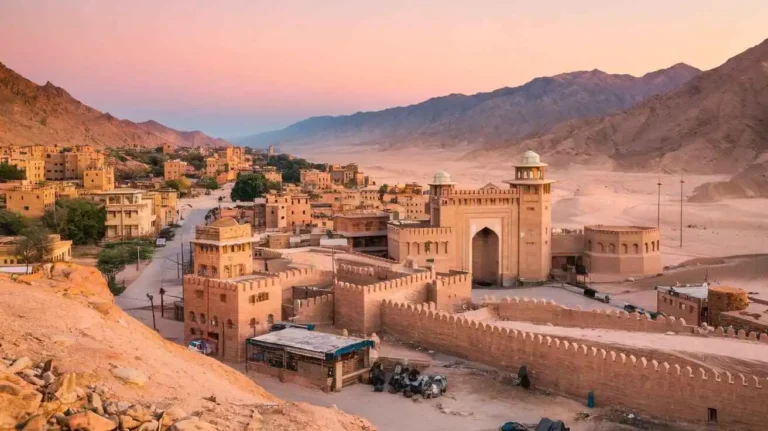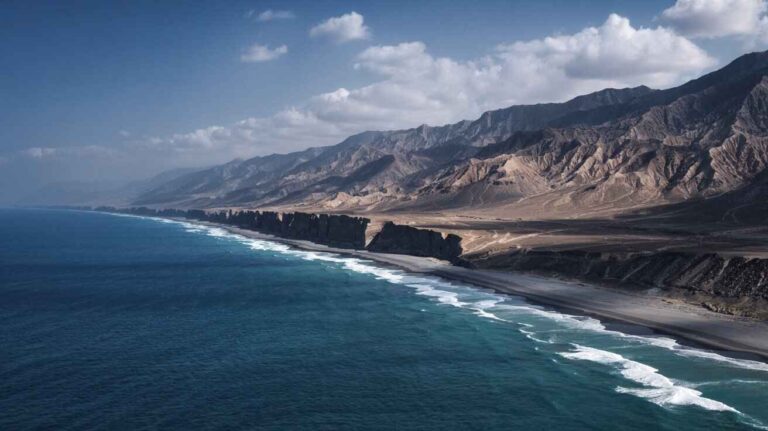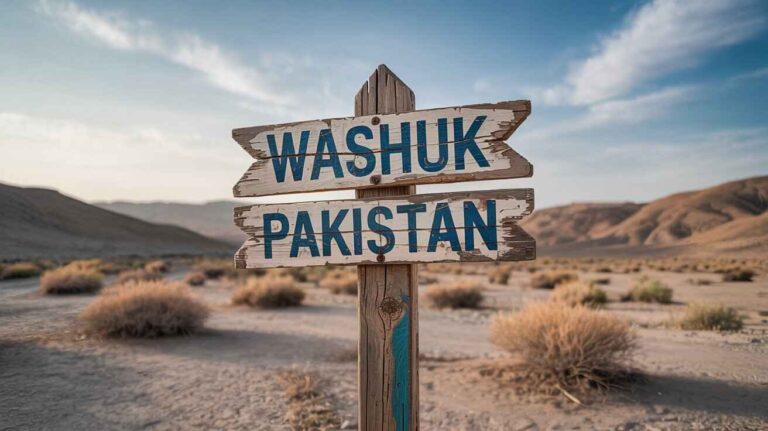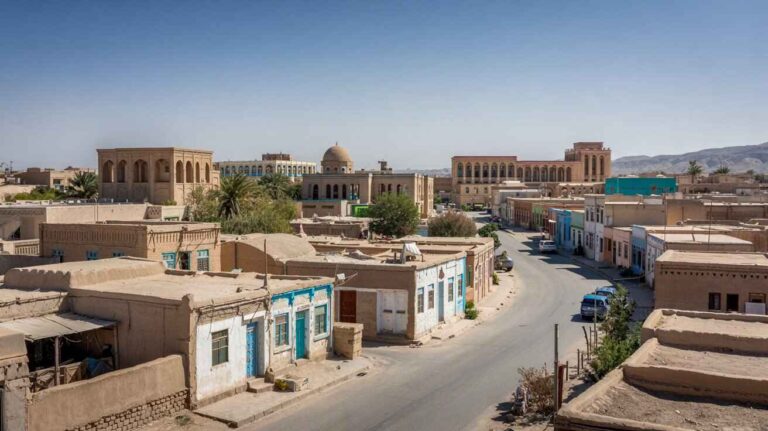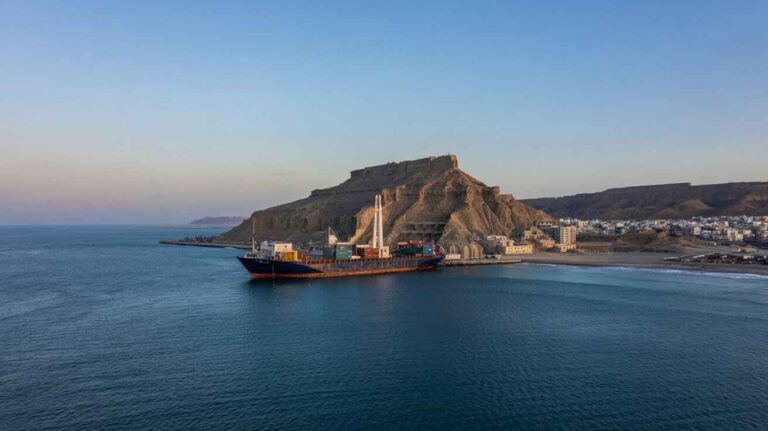Kharan: The Desert Jewel of Balochistan
Kharan
Kharan is a district located in Balochistan, Pakistan. It is part of the Rakhshan Division and is known for its unique geographical features, rich history, and diverse demographics. The Kharan District covers a large area of approximately 14,958 km², with a population density of just 14.6 persons/km². The region’s administration includes several Tehsils such as Kharan Tehsil, Sar-Kharan Tehsil, Tohumulk Tehsil, and Patkain Tehsil, which are further divided into various Union Councils.
According to the 2023 census, the population of Kharan District has seen a remarkable increase, rising from 96,900 in 1998 to 260,352 in 2023, reflecting an annual growth rate of +8.14%. This surge in population is accompanied by changes in the literacy rate, which currently stands at 41.07%. The sex ratio is skewed, with 115.79 males for every 100 females.
The people of Kharan primarily speak Balochi (91.24%) and Brahui (8.5%), with a small minority speaking other languages. The religious makeup of the district also shows diversity, with a small portion of the population identifying as Hindus (1.05%).
The district is known for its vast desert plains, mountain ranges, and river systems. Raskoh and the Khwaja Amran mountain ranges dominate the landscape, and the central desert plains in the Hamun-i-Mashkel area create a challenging yet picturesque environment. Rivers like the Baddo and Mashkel flow through the region, contributing to its agriculture and livestock activities.
Historically, Kharan was once an autonomous princely state under British India and later became part of Pakistan after 1948. The Khans of Kharan, including figures like Dinar Khan and Shahdad Khan, once ruled over the region, and their legacy remains in the Nausherwani tombs near Mashkel Tehsil.
Demographics and Population Growth
The population of Kharan has grown significantly over the decades. In 1981, the population was around 10,472, and by 1998, it had reached 27,806. The most recent 2023 census indicates a total population of 260,352, which is a substantial increase from previous years. This growth, at an annual rate of +8.14%, reflects the district’s increasing importance within the region.
Educational Landscape
The education system in Kharan faces numerous challenges, including low literacy rates and insufficient infrastructure. The district education rankings for 2017 placed Kharan at number 110 out of 141 districts in Pakistan. Many schools lack basic facilities, such as electricity, clean drinking water, and toilets, which further hampers the learning experience. Despite these challenges, there are efforts to improve primary education in the district, with over 6,987 students enrolled in classes 1 to 5, though gender disparity remains a significant issue.
Economy and Agriculture
The economy of Kharan District is mainly driven by agriculture and livestock breeding. The region grows a variety of crops, including wheat, barley, sunflower, and cotton. Fruits such as almonds, apricots, and grapes are also cultivated, adding diversity to the local economy. The livestock sector is significant, with sheep, goats, and cattle being commonly raised. Additionally, fishing and hunting are vital parts of the economic activity in the district.
Rangelands are prevalent in the district, and forests in areas like Raskoh and Garr provide some vegetation, including date palms and various xerophytes. These forests also contribute to the wildlife ecosystem, which is protected in designated wildlife sanctuaries.
Infrastructure and Connectivity
While the infrastructure in Kharan is underdeveloped in some areas, efforts have been made to improve roads, telecommunications, and electricity. The district has 1,131 km of black-topped roads and 1,326 km of shingle roads. Telecommunication services include landlines, wireless phones, and broadband, though the coverage is limited. Electricity is supplied by QESCO, but access to piped water is limited, with only 9.4% of the population having access to it.
Kharan District is a region of vast contrasts, where desert plains and mountain ranges coexist, and rich history and culture meet modern-day challenges. From its geographical beauty to its demographic shifts, the district is experiencing growth and development. However, it also faces considerable obstacles, especially in areas like education, infrastructure, and healthcare. Despite these challenges, there is hope for progress as the district continues to evolve.
Kharan – A District of Diverse Economic Landscapes
Nestled in the heart of Balochistan, Kharan district offers a unique blend of geography, natural resources, and traditional livelihoods that shape its economic and social identity. With my experience researching the economic patterns of Balochistan’s districts, I’ve always found Kharan particularly fascinating. The region’s mix of plateaus, inter-mountain basins, and rugged terrain carves out a distinct ecological and agricultural identity. The people here have built their lives around the land, nurturing it for generations.
The land use patterns of Kharan district, based on Development Statistics 2018-19, paint a broad picture of how the 1,495,800 HA total area is utilized. Out of the massive 3,593,379 hectares reported, only 167,739 hectares are cultivated. This includes 19,609 hectares of net sown area and 148,130 hectares under current fallow, leaving a significant 3,425,640 hectares uncultivated. Interestingly, 755,077 hectares are classified as culturable waste, while 32,658 hectares are under forest, which contributes to the district’s environmental diversity.
The agricultural heartbeat of Kharan lies in its Dry Western Plateau Agro-Ecological Zone. Here, farmers cultivate wheat, barley, rapeseed, mustard, cumin, masoor, jowar, bajra, and maize. These crops are well-suited to the steep and narrow valleys of the district. Pulses like moong, maash, and cash crops like cotton, sunflower, and canola also find their space, reflecting the district’s adaptive farming approach. Fresh vegetables—onions, chilies, okra, radish, spinach, and brinjal—grow alongside fruits like almonds, apples, apricots, pomegranate, and grapes, despite the dry climate.
Livestock breeding is another major economic activity, particularly among nomadic families who rely on it for income. Based on the 2006 Census and Balochistan Development Statistics 2013-14, Kharan housed 665,903 sheep, 635,731 goats, and 76,069 camels. Indigenous breeds like kharani camel, khurasani goat, and rakhshani sheep are part of the cultural and biological wealth of the area. Though cattle, buffalo, and horses are fewer in number, they still hold significance in daily life and traditional practices.
The poultry farms in Kharan district are modest, with only 11 commercial setups contributing to local food supply. The size of these flocks may not match urban counterparts, but their presence supports small-scale entrepreneurs. Similarly, bee keeping is gaining traction as a viable economic activity, with more locals now exploring its potential in this dry, floral-rich terrain.
When discussing water resources, fishing may not stand out as a mainstream income source due to the absence of large water bodies, yet fishing in River Baddo, River Mashkel, and their tributaries supports local use. While not a dominant economic stream, it plays a quiet role in the region’s food security.
Irrigation remains the backbone of agricultural sustainability. According to the Balochistan Development Statistics 2018-19, Kharan district has 21,548 hectares of irrigated area. A network of 8,388 private tube wells, 13 karezes, and 13 spring-fed systems ensures water access. Traditional systems like Pattak Karez, Lundo, and Noroz stand alongside modern structures like Garruk Dam. Some systems even produce up to 300 KW electricity through small power houses, showcasing a clever use of resources.
The industrial scene of Kharan is slowly developing. Manufacturing activities are minimal, yet traditional industries like carpet weaving, embroidery, and training centers provide an important source of income. With three centers officially reported by the GoB, the potential for growth exists if supported strategically.
Beneath Kharan’s surface lies a wealth of minerals. While still under exploration, resources like chromite, manganese, and even traces of oil and gas present opportunities for future mining ventures, which could redefine the district’s economic narrative.
Handicrafts reflect the soul of Kharan’s people. The district is known for its intricate needlework, mirrors, and colorful embroidery on caps, purses, and shoes. Artisans also produce beautiful carpets, furniture, and pottery—a vibrant expression of culture and talent. These items are often sold in local markets, and their manufacture provides jobs to many families.
When evaluating economic infrastructure, however, Kharan remains underdeveloped. Despite being one of the oldest districts, its road links and communication systems lag behind. The National Highway passing through Khuzdar offers limited connectivity, while provincial shingle roads remain the norm in rural areas.
The Balochistan Development Statistics 2018-19 report 2,457.0 km of roads in the district, with 1,131.0 km black topped and 1,326.0 km low type shingle roads. This shows a gradual shift towards improved transport infrastructure but also highlights the work that remains.
One of the important roads is National Highway N-85, which connects Hoshab, Turbat, Surab, and Quetta, passing through Basima-Panjgur. This link also connects with N-30, the RCD road, making it vital for trade and communication.
As for railway and airway services, Kharan district lacks its own. The nearest station lies in Chagai, while a private airport—Sheikh Khalifa–Bin Zayed Shimshi—serves limited needs. This lack further hampers trade and emergency services.
Even radio and TV stations rely on boosters and cable services to be viewed in Kharan, showing that technological outreach is still catching up.
Telecommunications have improved slightly, with 02 telephone exchanges, 456 landlines, and 1,345 wireless phones. Broadband access stands at 334 users, provided by cellular companies, as recorded in the Balochistan Development Statistics 2018-19.
The district has only 01 post office, and courier services are shared with Washuk. The 2018-19 Statistics underscore the need for better logistical channels.
Banking too remains limited. Five branches of conventional banks operate in the district, including Habib Bank Ltd., National Bank of Pakistan, and Zarai Taraqiati Bank as per the 2019 State Reporting List.
Power supply is managed by Quetta Electric Supply Company (QESCO). Though Kharan receives electricity, the reach and consistency vary across villages and towns, leaving room for improvement.
The deserts in Kharan are one of the most defining features of the district, contributing to its unique and rugged beauty. Kharan is located in the southeastern part of Balochistan, and its vast desert landscapes stretch across much of the region.
ChatGPT said:
The culture of Kharan is deeply rooted in the traditions and heritage of the Baloch people, who have lived in this region for centuries. The culture is characterized by a strong sense of community, hospitality, and pride in their heritage. Here are some key aspects of Kharan’s culture:
Balochi Traditions:
Language: The primary language spoken in Kharan is Balochi, which is not just a means of communication but also a source of cultural identity. The dialect spoken in Kharan has its own unique features, distinguishing it from other regions of Balochistan.
Music and Dance: Traditional Balochi music plays a significant role in the culture of Kharan. Folk songs, often about love, life, and historical events, are performed with traditional instruments like the sitar and dohol. The Balochi dance, especially the Leva, is a vibrant and energetic performance, often seen during celebrations and festivals.
Poetry: Poetry, especially in the Balochi language, is highly regarded. Balochi poets have historically conveyed stories of valor, love, and hardship, passing down the region’s rich history through verse.
Hospitality:
One of the most notable aspects of Kharan’s culture is the hospitality of its people. Baloch hospitality is legendary, with guests being treated with the utmost respect. Offering tea, traditional dishes, and even livestock as a gesture of goodwill is a common practice.
Traditional Clothing:
The traditional dress of the Baloch people is a reflection of the region’s cultural values and climate. Men typically wear Shalwar Kameez with a loose shirt and a chadar (a shawl or cloth wrapped around the shoulders), while women wear colorful Balochi dresses, often adorned with intricate embroidery, mirrors, and beading, showcasing their artistic skills. The attire is designed to withstand the harsh desert climate while maintaining cultural pride.
Crafts and Art:
The people of Kharan are skilled in a variety of traditional crafts, including embroidery, carpet weaving, and pottery. These crafts are passed down through generations and often serve as both a form of expression and an economic activity. The intricate embroidery in Balochi dresses is particularly famous for its vibrant colors and delicate patterns.
Festivals and Celebrations:
Baloch New Year (Nauroze): Like other regions of Balochistan, Kharan celebrates Nauroze or the Baloch New Year with great enthusiasm. This marks the arrival of spring and is celebrated with feasts, music, dance, and community gatherings.
Religious Festivals: Islamic holidays like Eid ul-Fitr and Eid ul-Adha are widely celebrated. These festivals are a time for family gatherings, feasting, and sharing food with the less fortunate.
The Deserts in Kharan:
Vast Sand Dunes: The desert in Kharan is characterized by expansive sand dunes that stretch across miles of land. These dunes are a stark contrast to the surrounding mountains, creating a breathtaking landscape. The soft, golden sand can be mesmerizing, especially at sunrise and sunset.
Extreme Climate: The climate in the Kharan desert is typically arid and harsh. Summers can be intensely hot, with temperatures soaring above 40°C (104°F), while winters are relatively cooler but can still be chilly at night. The lack of rainfall makes the desert a dry, barren place with limited vegetation.
Sparse Vegetation: Despite the harsh climate, the desert does have some forms of life. You’ll find hardy vegetation such as shrubs, acacia trees, and some desert grasses. These plants are adapted to survive the dry conditions and are important for the local wildlife.
Wildlife: The Kharan desert is home to a variety of wildlife, including desert foxes, gazelles, and different species of reptiles. Birds like vultures and eagles are also seen soaring above the dunes. The desert environment offers a habitat for these species, which are specially adapted to survive in such extreme conditions.
Nomadic Culture: The desert environment in Kharan has fostered a nomadic lifestyle for many Baloch families. These people have adapted to the harsh desert conditions, often moving with their livestock to find grazing land and water. Their tents and settlements are often temporary, moving with the seasons.
Desert Tourism and Adventure: While not a traditional tourist hotspot, the Kharan desert attracts adventurers, photographers, and nature lovers who are drawn to its remote beauty. The vast emptiness and quiet of the desert offer a peaceful escape from the bustle of city life.
Historical Significance: The desert areas of Kharan also have historical significance, as ancient trade routes once passed through the region, linking Balochistan with the rest of South Asia, the Middle East, and Central Asia.
The desert of Kharan is both a place of natural beauty and extreme challenge, embodying the resilience of both nature and the people who call this land home.
Kharan: The Desert District of Untapped Promise
Echoes of Time: Kharan’s Journey Through History
In the dry heartland of Balochistan, tucked between the borders of Iran and Afghanistan, lies Kharan, a district that tells a story of ancient loyalty and slow but steady transformation. While working on a heritage preservation project in southwest Pakistan a few years back, I found myself traveling through this hot, humid land where summers stretch for eight months of the year. The Climate is unforgiving, yet the people and their past are deeply rooted and full of resilience.
Kharan began as a State, established in 1697, and served as a vassal to the State of Kalat until 1940. During that era, the rulers of Kharan were powerful tribal leaders who bore the title of Mir, and later, Sardar Bahadur Nawab. These leaders were part of the Nausherwani tribe, a well-known lineage in Balochistan. The State of Kharan remained autonomous and held considerable sway until the post-colonial transitions that followed August 1947.
After the partition of British India, Kharan retained its status as a quasi-independent tribal area. I remember speaking to an elderly shopkeeper in the local market of Kharan, who proudly narrated how the ruler of Kharan signed the Instrument of Accession to Pakistan on 17 March 1948. It was a time of hope and strategic alignment. The State joined the Balochistan States Union on 3 October 1952, and was eventually dissolved on 14 October 1955, merging into what became West Pakistan.
But what sets Kharan apart is not just its history—it’s its strategic location. Dominating the Moola Pass and seated near the Ras Koh Hills, Kharan played host to Pakistan’s second nuclear test on 30 May 1998, where a miniaturized device with 60 percent yield was tested. I stood once on the edge of that remote desert, imagining the weight of that moment on our national memory.
Today, Kharan district consists of a single tehsil, administratively divided into nine union councils. The population crossed 234,400 by 2010, a modest but significant figure for a region with such extreme terrain. It’s part of the largest division of Balochistan, Rakhshan Division, making it not only historically rich but also critical for future development.
In speaking to professional researchers and locals alike, a common thread emerged—Kharan has enormous potential. It’s a sleeping giant when it comes to potential sectors for investment. Its climate, though harsh, ironically creates high demand for Cold storages, Ice Plants, and refrigerators for domestic use and industrial use. The continuous ice consumption across the district, especially in fish, poultry, and dairy sectors, points toward a growing market.
As a professional consultant once advising on post-harvest practices in Balochistan, I noticed a huge gap in cold storage facility development. The inadequate capacity of existing cold storages and unavailability of cool chains results in significant post-harvest losses. Perishable food items like apricot, grapes, and apple—some of which are grown locally—lack proper freeze solutions to extend their shelf life. In seasonal surpluses, prices fall, and growers lose out due to absence of bulk supplies systems or timely transport to markets in Iran and Central Asian States.
Much of the produce that doesn’t meet market standard becomes low grade fruits, often wasted. However, with the right processing technology, we could produce Jam, Juices, Concentrates, Chutney, and Candy, increasing availability, raising quality, and reducing wastage. The Farming Community here is eager, but lacks access to modern tools and training.
The region also holds unexplored opportunities in Food Processing. During the harvest season, a large quantity of fruits and vegetables is retained locally, but rarely reaches the high end market. Through dehydration, we can venture into dried fruits, vegetables, and tap into the dried fruit, nut industry, and even the breakfast cereal, bakery industry, and confectionery markets. These packaged food industry opportunities are not only economical but also light weight, making them ideal for ordinary storage and export. Frozen and canned materials can also be packed for a stable shelf experience.
Yet, none of this can be achieved without addressing persistent problems in access to finance. Many local producers have problems in getting finance, which keeps the cycle of lack of value addition in the production going. And then there’s Load shedding, which adds further instability to the region’s economic potential. Without stable power, even the most promising ice plant or cold storage becomes unreliable.
The introduction of high efficiency irrigation system is another must. The irrigation system here is outdated, affecting both product quality and availability. There’s an urgent need to install modern systems that conserve water and increase yield.
From my interaction with agricultural growers, I understood the reliance on traditional process is still common. To move forward, they must change their methods, enact new techniques, and be trained in modern machinery. I recall attending a workshop where a simple demonstration on dehydration increased a farmer’s results by 40% in terms of product quality and reduced spoilage.
Kharan, with its district profile, is a goldmine waiting to be polished. By solving challenges in production, preservation, and distribution, and by focusing on value, shelf life, and processing, we can uplift both the local market and expand globally through exporting.

